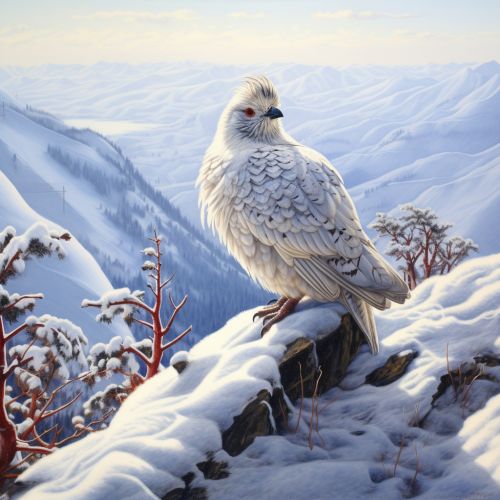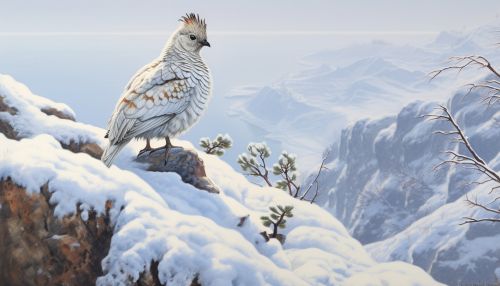Ptarmigan
Introduction
The Ptarmigan is a small, ground-dwelling bird that belongs to the grouse family, Phasianidae. It is known for its remarkable ability to change its plumage color with the seasons, providing effective camouflage in its harsh, often snowy habitat. This article delves into the intricate details of the Ptarmigan's biology, behavior, and habitat, as well as its significance in various cultures and its status in the wild.


Taxonomy and Evolution
Ptarmigans belong to the genus Lagopus, a term derived from Ancient Greek that translates to "rabbit foot," a reference to the bird's feather-covered feet. The genus comprises three species: the Willow Ptarmigan (Lagopus lagopus), the Rock Ptarmigan (Lagopus muta), and the White-tailed Ptarmigan (Lagopus leucura). These species are closely related and share many common characteristics, but they inhabit different geographical regions and have distinct behavioral traits.
Physical Characteristics
Ptarmigans are compact birds with short wings and tails. They have a unique feature among birds: their feet are fully feathered, which provides insulation in cold weather and increases the surface area of their feet, acting like natural snowshoes.
Plumage and Camouflage
One of the most striking characteristics of the Ptarmigan is its seasonal plumage. In winter, the birds are almost entirely white, allowing them to blend in with snow-covered landscapes. As the seasons change, so does their plumage, turning to a mottled brown in summer to match the earth and rocks of their tundra habitat.
Habitat and Distribution
Ptarmigans are birds of the cold, inhabiting the tundra and moorlands of the Arctic and subarctic regions. They are found across the northern parts of North America, Europe, and Asia. Each species has a slightly different range and preferred habitat.
Diet and Foraging Behavior
Ptarmigans are omnivores, feeding on a variety of foods depending on the season. Their diet primarily consists of plant material, including leaves, buds, and berries, but they also consume insects and other small animals when available.
Reproduction and Life Cycle
Ptarmigans have a monogamous mating system. The breeding season begins in spring, when males establish territories and attempt to attract a mate. Females lay a clutch of eggs, usually in a simple ground nest, and incubate them for about three weeks.
Cultural Significance
Ptarmigans hold a significant place in the folklore and traditions of many Arctic and subarctic cultures. They are often featured in indigenous art, mythology, and storytelling. In some cultures, the Ptarmigan is a symbol of transformation due to its changing plumage.
Conservation Status
Currently, all three species of Ptarmigan are listed as of "Least Concern" by the International Union for Conservation of Nature (IUCN). However, like many Arctic and subarctic species, they are potentially vulnerable to the impacts of climate change.
